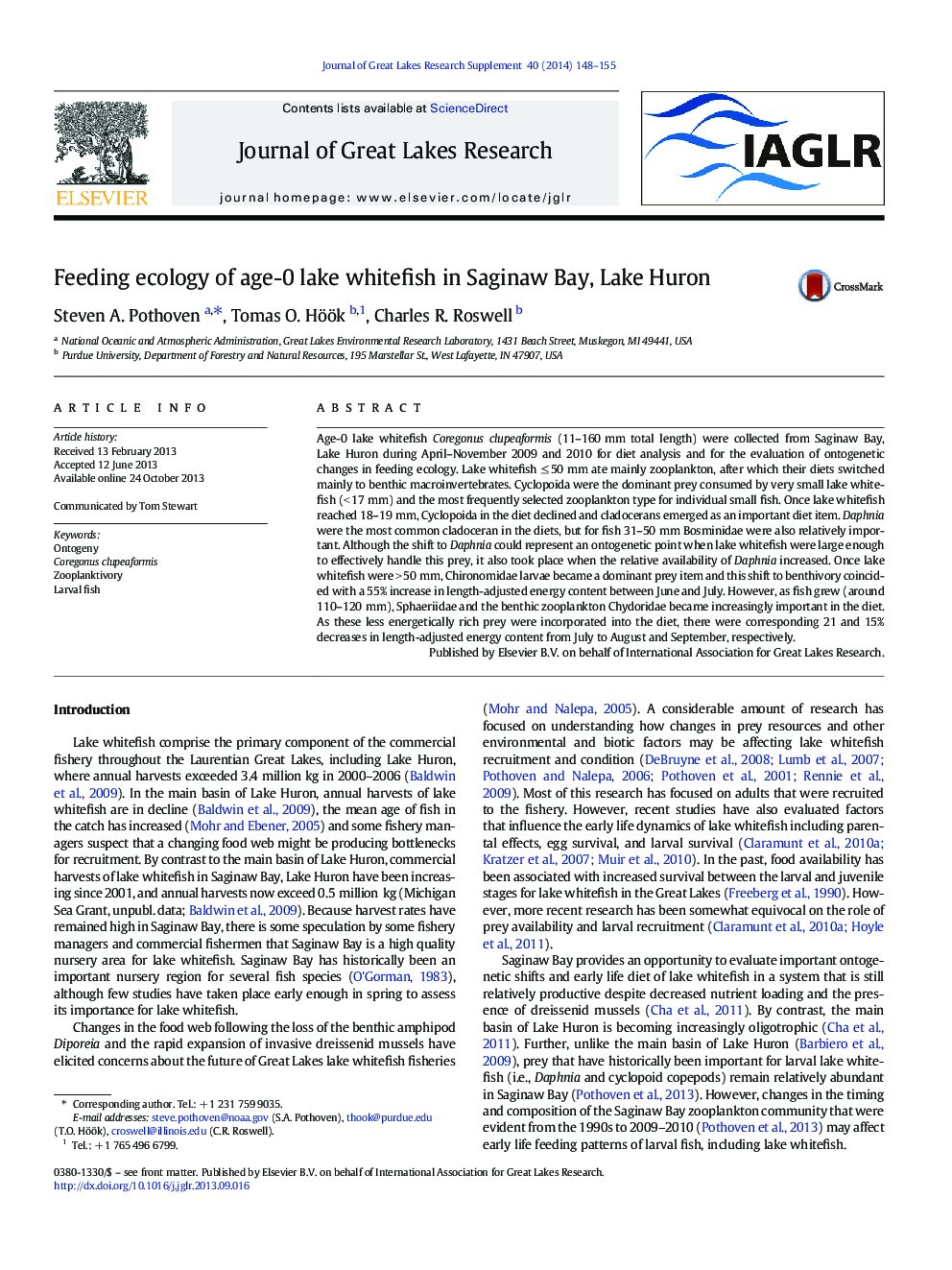| کد مقاله | کد نشریه | سال انتشار | مقاله انگلیسی | نسخه تمام متن |
|---|---|---|---|---|
| 4398391 | 1306688 | 2014 | 8 صفحه PDF | دانلود رایگان |

• Diet analysis was done on age-0 lake whitefish from Saginaw Bay in 2009 and 2010.
• Whitefish ≤ 50 mm ate mainly zooplankton, shifting from Cyclopoida to cladocerans.
• Once lake whitefish were > 50 mm, Chironomidae larvae became a dominant prey item.
• Around 110 mm, Sphaeriidae and benthic zooplankton Chydoridae were important prey.
• Small age-0 lake whitefish had a more specialized diet than larger fish.
Age-0 lake whitefish Coregonus clupeaformis (11–160 mm total length) were collected from Saginaw Bay, Lake Huron during April–November 2009 and 2010 for diet analysis and for the evaluation of ontogenetic changes in feeding ecology. Lake whitefish ≤ 50 mm ate mainly zooplankton, after which their diets switched mainly to benthic macroinvertebrates. Cyclopoida were the dominant prey consumed by very small lake whitefish (< 17 mm) and the most frequently selected zooplankton type for individual small fish. Once lake whitefish reached 18–19 mm, Cyclopoida in the diet declined and cladocerans emerged as an important diet item. Daphnia were the most common cladoceran in the diets, but for fish 31–50 mm Bosminidae were also relatively important. Although the shift to Daphnia could represent an ontogenetic point when lake whitefish were large enough to effectively handle this prey, it also took place when the relative availability of Daphnia increased. Once lake whitefish were > 50 mm, Chironomidae larvae became a dominant prey item and this shift to benthivory coincided with a 55% increase in length-adjusted energy content between June and July. However, as fish grew (around 110–120 mm), Sphaeriidae and the benthic zooplankton Chydoridae became increasingly important in the diet. As these less energetically rich prey were incorporated into the diet, there were corresponding 21 and 15% decreases in length-adjusted energy content from July to August and September, respectively.
Journal: Journal of Great Lakes Research - Volume 40, Supplement 1, 2014, Pages 148–155